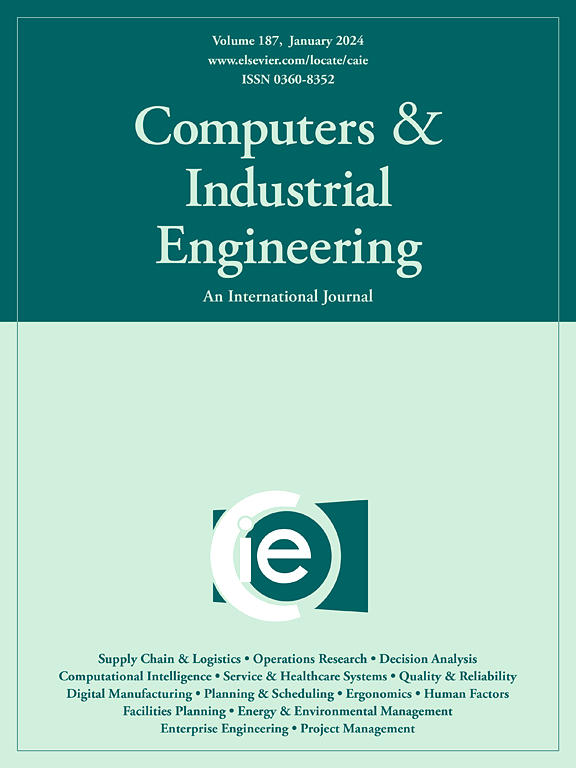Ant Colony Optimization for solving large-scale bi-level network design problems
IF 6.7
1区 工程技术
Q1 COMPUTER SCIENCE, INTERDISCIPLINARY APPLICATIONS
引用次数: 0
Abstract
In this study, we consider a bi-level hierarchical network design problem that encompasses both gradual and cooperative coverage. The lower-level facility serves as the primary point of contact for customers, while the upper-level facility acts as a supplier for the lower-level facilities. We first present a mathematical formulation of the problem, followed by an Ant Colony Optimization (ACO) approach to solve it. We then compare the performance of our method with commercial exact solvers. Our experiments, conducted on instances of various sizes, show that while exact methods may succeed in the long run, our heuristic provides a fast and reliable option for operational decisions that need to be made in a short period of time. In nine out of twelve instances, the exact solver failed to find a feasible solution within three hours for the high-budget case and two hours for the low-budget case. In contrast, our heuristic had run times between 0.1 and 0.4 h for 50 iterations. We also compare the performance of ACO with that of a Genetic Algorithm (GA) to evaluate its effectiveness among heuristics. Our numerical results demonstrate that ACO outperforms GA. This study contributes to the literature by offering a solid theoretical framework for the problem and implementing ACO to solve a bi-level facility location problem. Our results demonstrate that ACO can deliver good solutions in a reasonable time and serves as a promising alternative.
求解大规模双层网络设计问题的蚁群算法
在本研究中,我们考虑了一个包含渐进覆盖和合作覆盖的双层分层网络设计问题。低层设施是客户的主要接触点,而上层设施则是低层设施的供应商。我们首先提出了这个问题的数学公式,然后用蚁群优化(ACO)方法来解决它。然后,我们将我们的方法与商业精确求解器的性能进行了比较。我们在不同规模的实例上进行的实验表明,虽然精确的方法可能在长期内取得成功,但我们的启发式方法为需要在短时间内做出的操作决策提供了快速可靠的选择。在12个实例中的9个中,精确解算器在高预算情况下的3小时内和低预算情况下的2小时内未能找到可行的解。相比之下,我们的启发式算法在50次迭代中运行时间在0.1到0.4小时之间。我们还比较了蚁群算法与遗传算法(GA)的性能,以评估其在启发式算法中的有效性。数值结果表明,蚁群算法优于遗传算法。本研究为该问题提供了坚实的理论框架,并运用蚁群算法解决了双层设施选址问题。我们的结果表明,蚁群算法可以在合理的时间内提供良好的解决方案,是一种有前景的替代方案。
本文章由计算机程序翻译,如有差异,请以英文原文为准。
求助全文
约1分钟内获得全文
求助全文
来源期刊

Computers & Industrial Engineering
工程技术-工程:工业
CiteScore
12.70
自引率
12.70%
发文量
794
审稿时长
10.6 months
期刊介绍:
Computers & Industrial Engineering (CAIE) is dedicated to researchers, educators, and practitioners in industrial engineering and related fields. Pioneering the integration of computers in research, education, and practice, industrial engineering has evolved to make computers and electronic communication integral to its domain. CAIE publishes original contributions focusing on the development of novel computerized methodologies to address industrial engineering problems. It also highlights the applications of these methodologies to issues within the broader industrial engineering and associated communities. The journal actively encourages submissions that push the boundaries of fundamental theories and concepts in industrial engineering techniques.
 求助内容:
求助内容: 应助结果提醒方式:
应助结果提醒方式:


